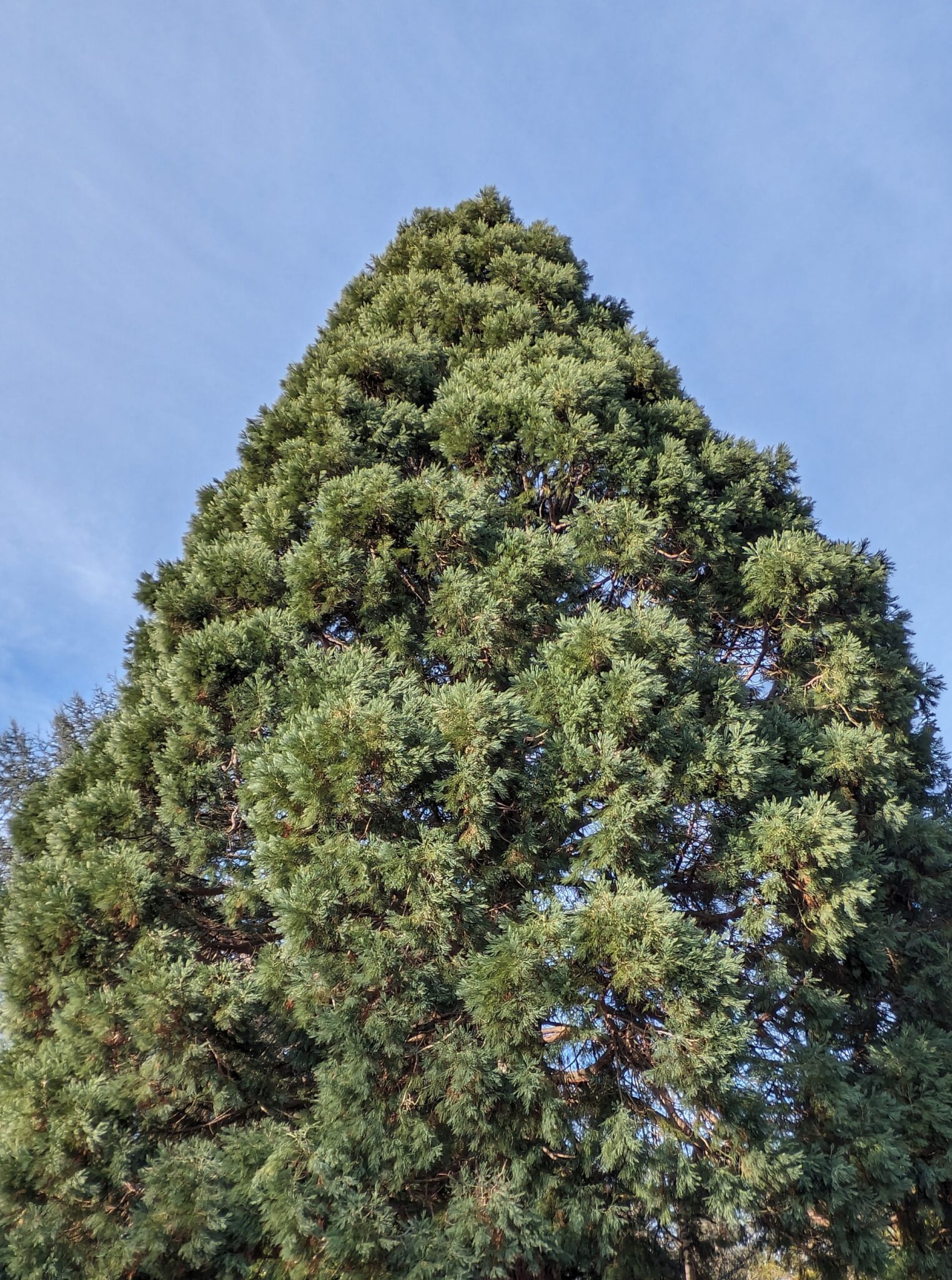
Tree Highlight: Giant Sequoia
The giant sequoia (Sequoiadendron giganteum) is the most massive tree on earth. This majestic evergreen tree is native to the western slopes of the Sierra Nevada, but also grows in the Portland area. The giant sequoia is also known for its longevity. Some giant sequoias alive today were already 1800 years old when Columbus reached America!
Giant Sequoia Growth Habit
The giant sequoia grows in a pyramidal form. These trees can grow to astounding heights (over 250 feet tall), massive girth (over 90’ circumference), and impressive age (over 3000 years old). Its massive trunk is buttressed and supports a distinctive pointy top.
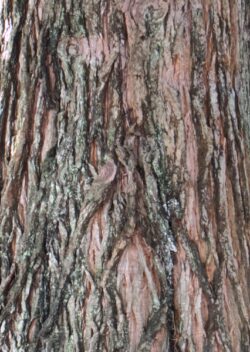
The spongy, soft, reddish-brown ridges of the giant sequoia bark can grow to be over two feet thick. The thickness of the bark, the high tannic acid level of the bark, and the height of the mature canopy make the giant sequoia practically immune to forest fires. In fact, the giant sequoia relies on fire to release the seeds from the 2-3” long egg-shaped cones for reproduction.
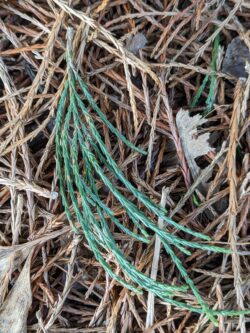
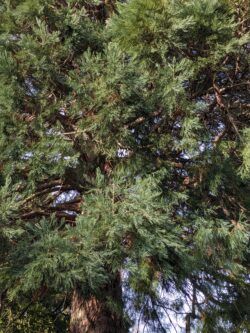
The leaves of the giant sequoia are small and sharp and look like scales on branchlets. The beautiful blue-green foliage looks like bushy, rounded clusters.
Planting and Care
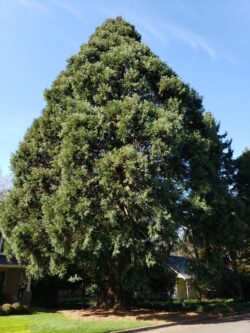
The massive size of the giant sequoia makes it a less popular choice in small urban yards. If you have the space for a 50 foot mature canopy, the planting site for a giant sequoia tree should be in full sun and rich, well-drained soil. Once established, giant sequoias are well adapted to our dry summers.
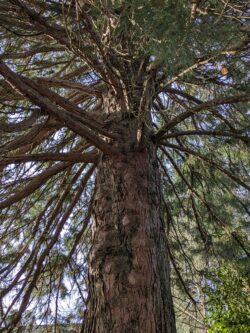
Giant sequoia trees naturally self-prune their lower limbs as they become shaded and less productive for the tree. The tree seals off the less productive branch, and the branch dies and becomes weakened. In a yard setting, a self-pruned branch could be a hazard as it decays if it is growing above a structure or living area. In a landscape, the falling self-pruned branch could also damage plants below it. In these cases, instead of waiting for it to fall off naturally, our arborists may recommend proactive removal of these dead branches.
Notable Local Specimens
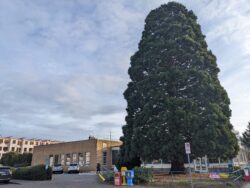
Although less than 100 years old, the giant sequoia pictured above towers over the Beaverton post office.
Even if you don’t have room to grow one of these massive trees, there are plenty of specimens growing nearby to admire. The Portland area has hundreds of massive giant sequoia trees that tower over our area. Eight of these trees are listed as City of Portland Heritage Trees.
Hillsboro boasts some of the most impressive specimens. Planted in 1880 by pioneer settlers, several massive giant sequoias grace the grounds of the Washington County Courthouse.
Hoyt arboretum also has giant sequoia trees that have been growing since 1933. The redwood trail is a good place to see the trees there. The location of the individual trees can be found on their online plant inventory.
Valley Catholic School in Beaverton has 20 beautiful mature giant sequoia trees growing in a row since 1932. These trees can be seen from Tualatin Valley Highway.


